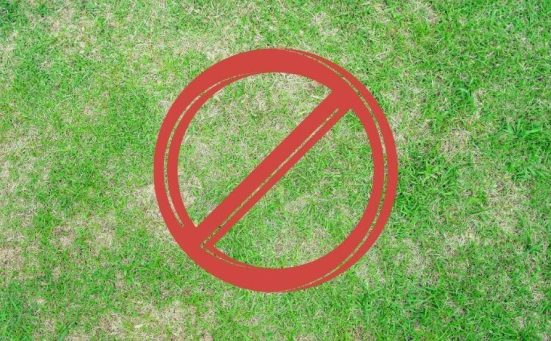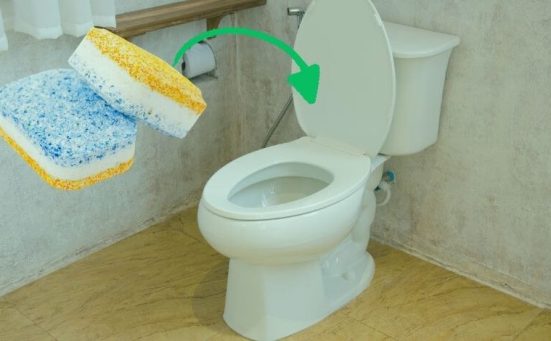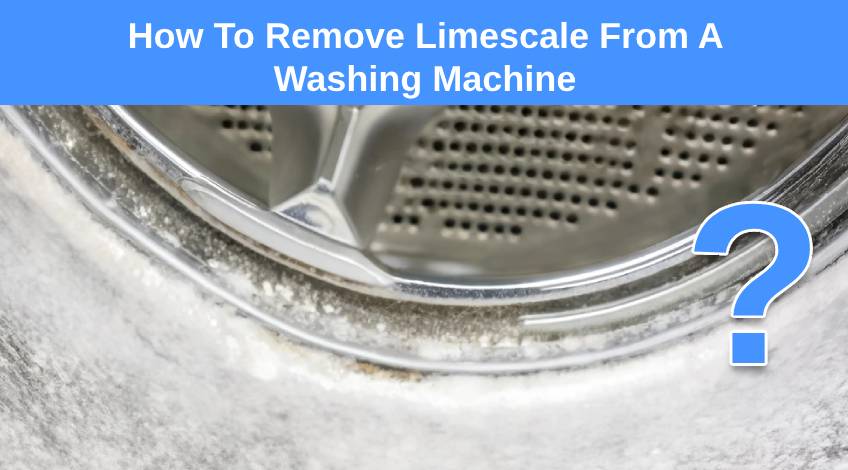
How To Remove Limescale From A Washing Machine
If you live in an area with hard water, chances are limescale is a huge headache for you. Hard water often results in limescale building up in your appliances, and can be a hassle to clean. However, knowing the right methods and products to use can significantly make the process easier.
To remove limescale from your washing machine, you can use a shop-bought descaler or the ingredients that are likely already in your kitchen, like white vinegar, bicarbonate of soda, or even lemon juice. These common household items are effective in breaking down limescale deposits and ensuring your washing machine runs smoothly.
Let’s have a closer look into the best ways to remove limescale, why prompt action is important, and ways to reduce limescale buildup in this article.
What Is Limescale – And Why Is It In Your Washing Machine?
Limescale is primarily made up of calcium carbonate, a substance left behind when hard water evaporates. If your home has hard water, which is common in many parts of the UK, your washing machine is likely to suffer from limescale deposits over time.
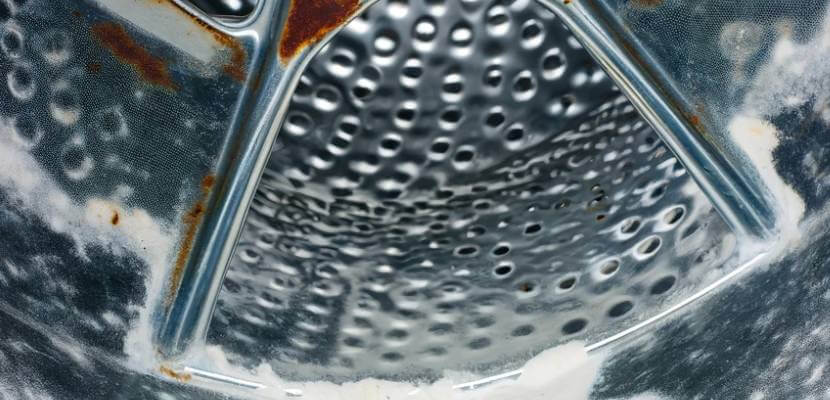
While your washer uses hard water during the laundry cycle, it’s common for limescale to remain on the surface of your machine, and if nothing is done to remove it, it will build up and may cause serious problems.
Unfortunately, these deposits can clog up not only your washer’s drum but also its heating elements and pipes, reducing the efficiency of your washing machine and increasing your energy bills.
Also, limescale can transfer from the washing machine to your clothes, which will not just affect their cleanliness but also result in an awful, mildewy smell.
Effective Ways To Remove Limescale In The Washing Machine
Fortunately, there are several effective methods to tackle limescale build-up in your washing machine. They are extremely easy and inexpensive to do, as long as you have the patience and time, your washer will be limescale-free once you’re done!
Feel free to choose the method that works based on the products you have and your preference:
Running An Empty Hot Water Cycle
One of the simplest methods to remove limescale is to run an empty hot water cycle on your machine. Since you’re not using any product, this method is best for mild limescale removal or just the regular maintenance of your machine.
This is done best by setting your washing machine to run at the highest temperature without any clothes. The heat from the water can help dissolve the minerals that have accumulated in the washer.
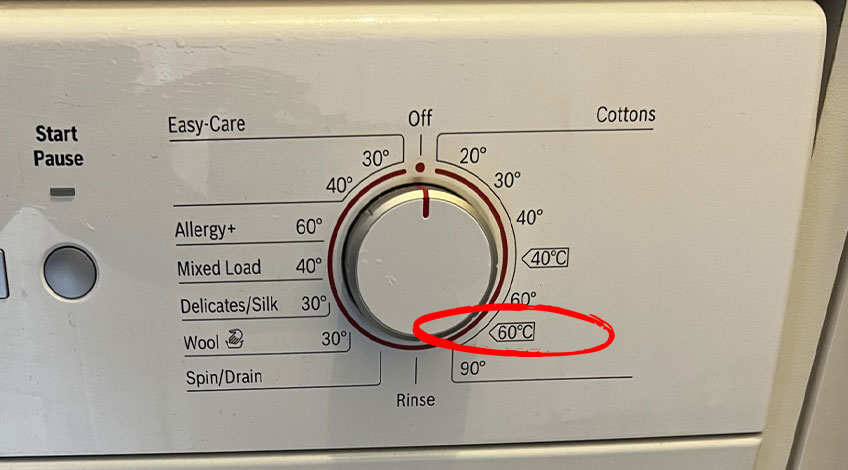
To do this, make sure to remove any laundry from the machine and empty the detergent drawer. Then, set your washing machine to run on the hottest cycle available. This heat will help dissolve the limescale effectively. Next, run the machine on a full cycle, and repeat if necessary.
Using A Shop-Bought Descaler
Commercial descalers are specially formulated to effectively remove limescale from appliances. These products often contain strong acids that can tackle heavy build-up quickly. If you need a quick fix and don’t mind using chemicals, then using a descaler will be the solution for you.
- Oust Dishwasher & Washing Machine Descaler. EACH PACK 2 SATCHETS X 75G
- Oust is designed to restore good as new shine and performance to your household appliances-no hassle just good results.
Here’s how you can do it:
- Choose a descaler – Purchase a descaler that is specifically designed for use in washing machines. These products are formulated to effectively break down limescale without damaging the internal components of your appliance.
- Read the instructions carefully – Before you begin, read the product instructions thoroughly. Different descalers may have specific guidelines regarding the amount to use and the cycle settings.
- Prepare the washing machine – Ensure that the washing machine is empty. Remove any laundry and ensure that the detergent drawer is clear.
- Add the descaler – Depending on the product’s instructions, you might need to add the descaler directly into the drum or put it in the detergent drawer. Some descalers come in tablet form, while others are in liquid or powder forms.
- Set the cycle – Set your washing machine to run on a long, hot wash cycle. The heat will help the descaler work more effectively in breaking down the limescale.
- Run the machine – Start the washing cycle and let it run uninterrupted. Make sure the machine completes the full cycle, including rinsing and spinning, to ensure that all traces of the descaler are removed from the machine.
- Repeat if necessary – After the cycle finishes, inspect your washing machine. If you still notice limescale residues, you may need to repeat the process with another dose of descaler.
TIP: Always follow the manufacturer’s instructions when using a commercial descaler to avoid any damage to your machine.
Using White Vinegar
White vinegar is a fantastic, natural descaling agent due to its acidic properties. If you have sensitive skin or just don’t want to use a lot of chemicals, white vinegar will surely get the job done.
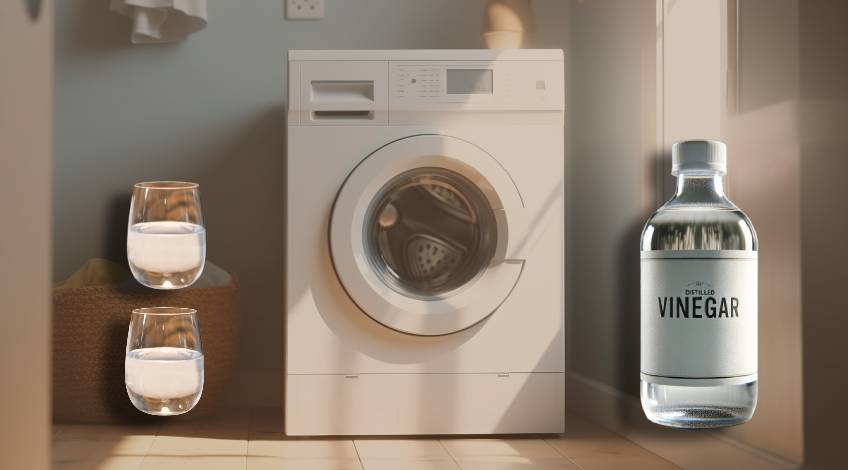
To do this, make sure that your machine is completely empty. Then, pour at least two cups of white vinegar directly into the drum. Set your washing machine to run on a long cycle at the highest temperature available, as the heat will help the vinegar break down the limescale more efficiently.
Start the machine and allow it to complete the full cycle to ensure that there is no vinegar residue in the drum. Once the cycle is complete, check the drum for hard water deposits that may still be present. Repeat if necessary.
Once the limescale is cleared, wipe down the drum, seals, and door with a clean cloth to remove any remaining vinegar odour and residue.
TIP: If the limescale buildup is severe, spray white vinegar on the drum and let it sit for at least 30 minutes. Then, follow the cleaning process above.
SEE ALSO: Will Vinegar Help When Doing Laundry In Hard Water?
Using Bicarbonate Of Soda
Bicarbonate of soda is not just for baking, as it can also be used to clean your washing machine. It’s mild yet abrasive enough to scrub away light limescale deposits.

To do this, just empty the machine and sprinkle at least half a cup of bicarbonate of soda directly into the drum. Next, select a long wash cycle at the highest temperature available, as the warm water will boost the bicarbonate of soda’s efficacy in breaking down the limescale.
Finally, wait for the cycle to complete, and repeat the process if necessary. Do another empty cycle without the bicarbonate of soda to remove any residue left.
Using Lemon Juice
Lemon juice works similarly to vinegar, as it also has citric acid content that’s effective against limescale.
To do this, start by ensuring that your washing machine is empty, then do the following steps:
Pour about 300 ml of lemon juice into the washing machine drum. You can use freshly squeezed lemon juice or bottled lemon juice as both are effective due to their high citric acid content.
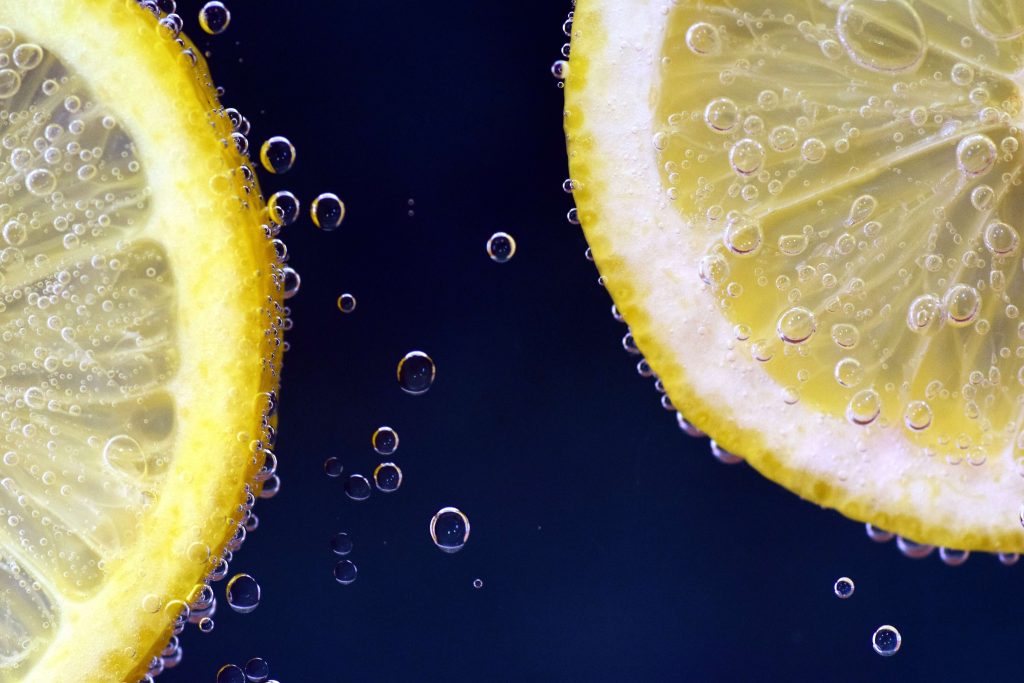
Choose a long wash cycle at the highest temperature setting. Then start the cycle and let the washing machine run until it’s complete. Check the drum and if you still see signs of limescale, repeat the process.
Run another empty wash to completely remove any lemon juice residue, and don’t forget to wipe the drum with a dry towel.
Why You Need To Deal With Limescale ASAP
Ignoring the limescale in your washing machine can lead to several problems. It can greatly reduce the efficiency of the machine, leading to higher electricity consumption and longer wash cycles.
It can also cause the heating element to fail, which is one of the most expensive parts of a washing machine to replace. And, limescale can contribute to unpleasant odours and residue on your clean laundry. You wouldn’t want to smell mouldy, would you?
The Benefits Of A Limescale-Free Washing Machine
Once you’ve removed limescale from your washing machine, you’ll likely notice several immediate and long-term benefits, such as:
Enhanced Performance And Efficiency
Without the limescale buildup, your washing machine can perform at its most efficient level.
Water will heat up more quickly, and the machine will require less energy to reach the desired temperatures.
This not only helps in reducing your electricity bills but also ensures that your wash cycles are as effective as they were meant to be, giving you cleaner and fresher clothes.
Extended Appliance Lifespan
Limescale can be quite damaging to the internal components of a washing machine, particularly the heating element.
By regularly descaling your machine, you will be able to reduce the risk of premature wear and tear. This can significantly extend the lifespan of your appliance, saving you money and the inconvenience of an early replacement.
Improved Fabric Care
When a washing machine is free of limescale, it operates more gently and efficiently. This means less stress on your clothes during each wash cycle. As a result, your fabrics are less likely to be damaged by hard water deposits, and will retain their colour and texture for a longer time.
Additionally, a clean machine reduces the risk of white residue on your dark clothes, which can sometimes happen when limescale is mixed with detergent.
Eco-Friendly Practice
Using natural descaling methods like vinegar and bicarbonate of soda reduces the need for harsh chemicals, making it a more environmentally friendly choice.
By maintaining your machine and ensuring it operates efficiently, you also use less water and energy, leading to a lower ecological footprint.
Ways To Prevent Limescale Build-Up In Your Washer
And there you have it! Now that you know the ways to remove limescale in your washer, we will also give you two tips on how to reduce the accumulation in the first place before ending this article.
Have A Regular Maintenance Schedule
Regularly cleaning and maintaining your washing machine is the best way to prevent limescale build-up. This includes monthly hot cycles and the use of natural descalers like vinegar or bicarbonate of soda.
Use A Water Softener
If you live in a hard water area, consider installing a water softener. This device treats the water before it enters your washing machine, reducing the amount of calcium and magnesium, which are the primary culprits behind limescale.
Removing and preventing limescale in your washing machine is extremely important to maintain its efficiency and prolong its lifespan.
By doing regular maintenance on your washer and using effective descaling methods, you are giving your appliance a better chance to remain in top working condition.
Do you have questions? Feel free to leave a comment below!
SEE ALSO: Does Hard Water Make Your Laundry Smell? (& What to Do)
Frequently Asked Questions
You can tell if your washing machine has limescale by checking for white, chalky residue or deposits in the drum, on the heating element, or in the pipes. Other signs include a mildewy smell in your clothes, reduced efficiency, and longer heating times.
The best way to descale a washing machine is by using a commercial descaler designed for washing machines. Follow the manufacturer’s instructions for the best results, typically involving running a hot cycle with the descaler added to the drum or detergent drawer.
To dissolve heavy limescale buildup in a washer, use a strong descaling agent like a commercial descaler or a concentrated solution of white vinegar or lemon juice. Run the washing machine on the hottest, longest cycle with the chosen solution, and repeat if necessary.
Yes, limescale can damage a washing machine. It can clog and corrode the heating elements, pipes, and drum, reducing efficiency, increasing energy consumption, and potentially leading to costly repairs or the need for premature replacement.
The risks of using natural descalers like vinegar include potential damage to rubber seals and hoses due to their acidic nature. Always rinse thoroughly after using vinegar to ensure no acidic residue remains that could degrade these components over time.
Also, follow us on Pinterest ...


